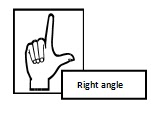
When I was a kid, one of the things I dreaded most was going to the dentist. Even though we were poor, my Mom took my brother and me every six months for a check-up.
Unfortunately, we didn’t have fluoridated water or toothpaste that enhanced our breath, made our teeth whiter, or prevented cavities.
I remember sitting in the waiting room hearing the drill buzzing, humming, and droning while the patient whined or moaned.
Needless to say, I did not find it a pleasant experience.
I am troubled that, as math teachers, we have carried over this idea of
drill into the classroom. Math has become a “drill and kill” activity instead of a “drill and thrill” endeavor.
Because of timed tests or practicing math the same way over and over, many students whine and moan when it is math time.
So how can we get student to those “necessary” skills without continually resorting to monotonous drill?
First we must understand the difference between drill and practice.
In math
drill refers to repetitive, non-problematic exercises which are designed to improve skills (memorizing basic math facts) or procedures the student already has acquired. It provides:
1) Increased proficiency with one strategy to a predetermined level of mastery. To be important to learners, the skills built through drill must become the building blocks for more meaningful learning. Used in small doses, drill can be effective and valuable.
2) A focus on a singular procedure executed the same way as opposed to understanding. (i.e. lots of similar problems on many worksheets) I have often wondered why some math teachers assign more than 15 homework problems. For the student who understands the process, they only need 10-15 problems to demonstrate that. For students who have no idea what they are doing, they get to practice incorrectly more than 15 times!
Unfortunately, drill also provides:
3) A false appearance of understanding. Because a student can add 50 problems in one minute does not mean s/he understands the idea of grouping sets.
4) A rule orientated view of math. There is only one way to work a problem, and the reason why is not important! (Just invert and multiply but never ask the reason why.)
5) A fear, avoidance, and a general dislike of mathematics. A constant use of math drills often leaves students uninterested.
On the other hand,
practice is a series of different problem-based tasks or experiences, learned over numerous class periods, each addressing the same basic ideas.
(ex. different ways to multiply) It provides:
1) Increased opportunity to develop concepts and make connections to other mathematical ideas. (i.e. A fraction is a decimal is a percent is a ratio.)
2) A focus on providing and developing alternative strategies. My philosophy, which hangs in my classroom, is: “It is better to solve one problem five ways than to solve five problems the same way.” (George Polya)
3) A variety of ways to review a math concept. (ex. games, crosswords, puzzles, group work)
4) A chance for all students to understand math and to ask why. (Why do we invert and multiply when dividing fractions?)
5) An opportunity for all students to participate and explain how they arrived at the answer. Some may draw a picture, others may rely on a number line, or a few may use manipulatives. Good practice provides feedback to the students, and explains ways to get the correct answer.

Let’s look at it this way. A good baseball coach may have his players swing again and again in the batting cage. This drill will help, but by itself it will not make a strong baseball player whereas practicing hitting a ball with a pitcher requires reacting to the different pitches with thought, flexibility, and skill.
I am of the opinion that
drill should not be omitted from the math classroom altogether.
Basic math skills should be automatic because being fluent in the basics makes advanced math easier to grasp.
There is a place for drill; however, its use should be kept to situations where the teacher is certain that is the most appropriate form of instruction.
Even though
practice is essential, for math it isn't enough. If understanding doesn't come, practice and drill will only leave a student with disjointed skills. If we want to produce strong mathematicians, we must focus on the BIG conceptual ideas through practice in problem-based lessons.
We must present ideas in as many forms as we can so that students will go beyond rote drill to insight.
If you are interested in sharing this with your staff, colleagues or parents, check out the power point entitled: Drill vs. Practice.











 about extra credit work, my question to you is:
about extra credit work, my question to you is:














